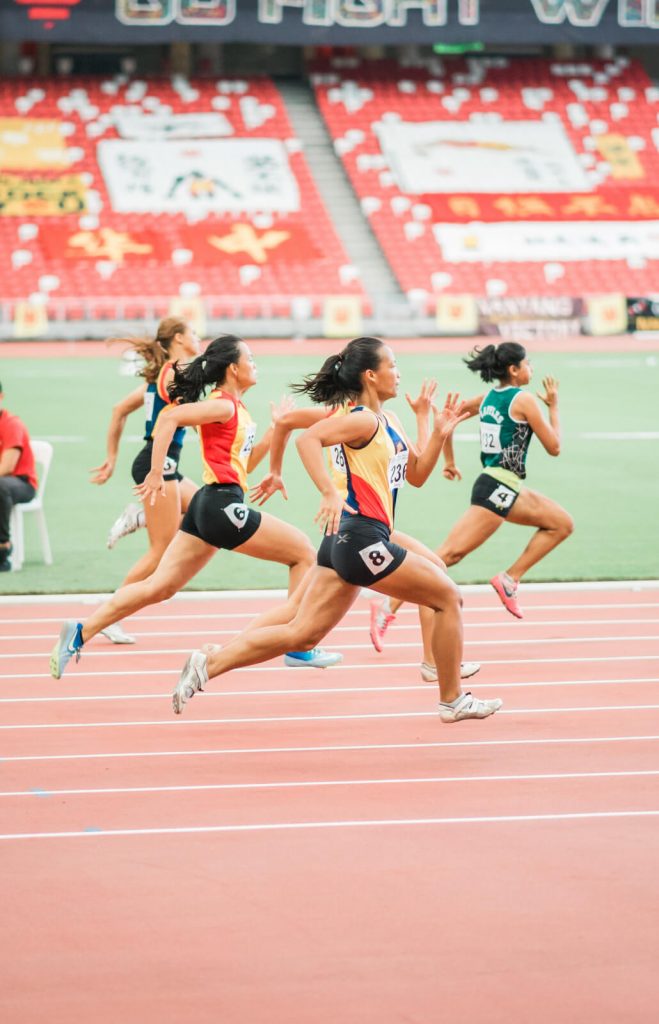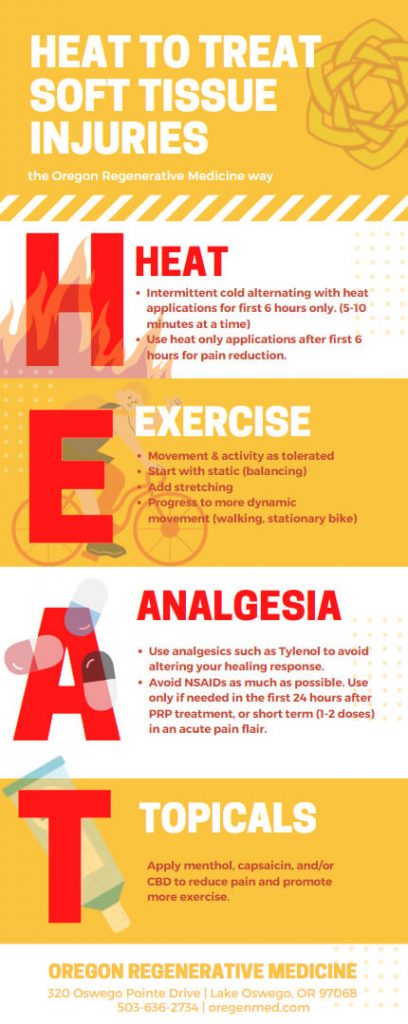As common as sprains and strains are, it is astounding how much misinformation persists about how to best manage injury care. Let’s set the record straight, using the best available evidence and parse the details:
Inflammation and Stress
Inflammation and stress are not always bad words. Uncontrolled, chronic, and unresolved inflammation is damaging. Short term, controlled inflammation is often necessary to drive repair after injury. For example, exercise is an inflammation-causing stressor that encourages growth and healing when done in appropriate doses. Stress and inflammation are necessary for strength, resilience, and health.

Optimal Injury Care
The ideal care for an injury relies upon the “goldilocks zone principle” of encouraging just enough circulation and inflammation to promote optimal healing but not so much that there is collateral damage. This idea is crucial to understanding the research because many studies use decreased swelling and/or pain as primary short-term outcomes. But simply reducing inflammation and pain as much as possible as quickly as possible should not be the goal—healing should be.
The patient’s desired outcome should be kept in mind: for an athlete with a competition coming up, trading the short-term gain of pain reduction with the longer-term downside of possible joint dysfunction may be appropriate. But for most, managing the healing for the best long-term outcome is the preferred approach.
Debunking R.I.C.E. as Injury Care
While many healthcare providers tout R.I.C.E. as the “go to” guidelines for injury care, here are the reasons you’ll want to think twice before following this plan:
Rest: Immobilization is not a recommended injury care practice at any point after a sprain.1 Exercise actually reduces the risk of recurrent sprains. Initially this means utilizing non-weight bearing ROM and balancing exercises, progressing to walking, biking, and running.
Ice: This is the most misunderstood modality when it comes to injuries. There is no definitive evidence to support icing. At best, short term application (5-10 minutes) is not detrimental and potentially beneficial for pain prior to doing rehab exercises.2,3
Compression: Non-rigid braces and compression sleeves can reduce pain while allowing for exercise. This is the only component of RICE that is helpful.
Elevation: There is no strong evidence analyzing elevation alone as a post-injury measure. The original rationale behind both compression and elevation was to reduce swelling, which as explained above, isn’t necessarily a worthy goal by itself.
What about NSAIDs?
NSAIDs are the classic short-term/long-term trade off. They reduce pain and quicken return to activity but can lead to reduced ROM and increased joint instability.4
The studies on NSAIDs have improper outcome markers: Pain. When a patient is injured, is the primary goal to reduce pain as quickly as possible or to heal the injury as healthfully as possible? These are two different goals and the implications are important.
NSAIDs do reduce pain, but at a cost: NSAIDs increase the rate of nonunion fractures by inhibiting bone callus formation. They also inhibit proper healing of the tendon after a tear. NSAIDs likely increase joint laxity after a ligament injury by the same mechanism.5
Here is what we recommend for optimal injury care:

In addition to Heat6, Exercise Analgesia and Topicals, we recommend:
- Compression and non-rigid bracing to promote more exercise
- Botanicals such as Theracurmin to aide in healing without an inhibitory effect7
- A whole foods diet high in protein and omega-3 fats may aide in healing and any prevent muscle mass loss from decreased activity8
Regenerative Injection Therapy and Injury Care
The principles outlined in this article are directly applicable to regenerative injection therapies. The inflammatory response from treatments such as PRP prolotherapy and adipose tissue graft therapy act as a catalyst for injury healing.
Sources
- Lin CW, Hiller CE, de Bie RA. Evidence-based treatment for ankle injuries: a clinical perspective. J Man Manip Ther. 2010;18(1):22-28. doi:10.1179/106698110X12595770849524
- Bleakley CM, McDonough SM, MacAuley DC, Bjordal J. Cryotherapy for acute ankle sprains: a randomised controlled study of two different icing protocols. Br J Sports Med. 2006;40(8):700-705. doi:10.1136/bjsm.2006.025932
- Collins NC. Is ice right? Does cryotherapy improve outcome for acute soft tissue injury? Emergency Medicine Journal 2008;25:65-68. doi:10.1136/emj.2007.051664
- Slatyer MA, Hensley MJ, Lopert R. A randomized controlled trial of piroxicam in the management of acute ankle sprain in Australian Regular Army recruits. The Kapooka Ankle Sprain Study. Am J Sports Med. 1997;25(4):544-553. doi:10.1177/036354659702500419
- Su B, O’Connor JP. NSAID therapy effects on healing of bone, tendon, and the enthesis. J Appl Physiol (1985). 2013;115(6):892-899. doi:10.1152/japplphysiol.00053.2013
- Weerasekara RMIM, Tennakoon SUB, Suraweera HJ. Contrast Therapy and Heat Therapy in Subacute Stage of Grade I and II Lateral Ankle Sprains. Foot & Ankle Specialist. 2016;9(4):307-323. doi:10.1177/1938640016640885
- Jiang D, Gao P, Lin H, Geng H. Curcumin improves tendon healing in rats: a histological, biochemical, and functional evaluation. Connect Tissue Res. 2016;57(1):20-7. doi: 10.3109/03008207.2015.1087517. Epub 2015 Nov 5. PMID: 26540017
- Tipton KD. Nutritional Support for Exercise-Induced Injuries. Sports Med. 2015;45 Suppl 1:S93-S104. doi:10.1007/s40279-015-0398-4



